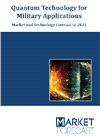Quantum research in both information science and sensing shows great promise for enabling a host of new defense applications. A major hindrance to transitioning breakthroughs from the laboratory to practical use, however, is the extensive equipment needed to cool and trap atoms to exploit their quantum features.
To address this challenge, DARPA has announced its Science of Atomic Vapors for New Technologies (SAVaNT) program. SAVaNT seeks to advance the performance of room-temperature atomic vapors to enable future opportunities for unprecedented combinations of low size, weight, and power (SWaP) with performance across multiple Department of Defense domains.
“The SAVaNT program will explore a new suite of technologies based on room-temperature atomic vapors to address important gaps for military-relevant applications,” said Tatjana Curcic, program manager in DARPA’s Defense Sciences Office. “We’re interested in innovative research proposals that significantly advance the performance of atomic vapors for electric field sensing and imaging, magnetic field sensing, and quantum information science.”

Market forecasts by Region, Technology, Application, and End-User. Market and Technology Overview, Country, Impact and Opportunity Analysis, and Leading Company Profiles
Download free sample pages More informationThe program is focused on warm atomic vapors as opposed to cold-atom technology, which requires cooling atoms to very low temperatures with lasers to reduce thermal noise. This process has enabled the world’s most accurate atomic clocks with unprecedented levels of timing precision. But the apparatuses needed to cool the atoms can fill up a laboratory, making laboratory atomic clocks impractical for field use. The warm atomic vapors approach, on the other hand, doesn’t require complex laser-cooling and allows for a larger number of atoms, boosting the signal. The challenge, however, is that thermal environment effects – even at room temperature – significantly mitigate how long the quantum effects, or coherence, can last.
SaVaNT researchers will demonstrate novel methods in three technical areas to overcome limitations due to thermal effects: Technical Area 1 seeks to develop a Rydberg sensor – which uses atoms to sense electric fields – that would provide ultra-narrow bandwidth, high-sensitivity electric field detection for millimeter waves. Technical Area 2 focuses on Vector Magnetometry to enable low-SWaP, room-temperature, quasi-DC magnetic field sensors. The third technical area will address vapor quantum electrodynamics to enable critical components for quantum networks at room temperature. Current methods require either cryogenics or laser cooling and trapping.